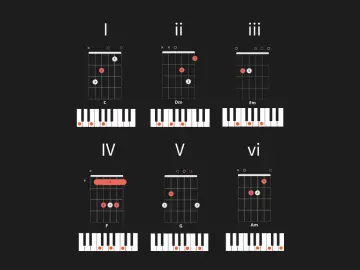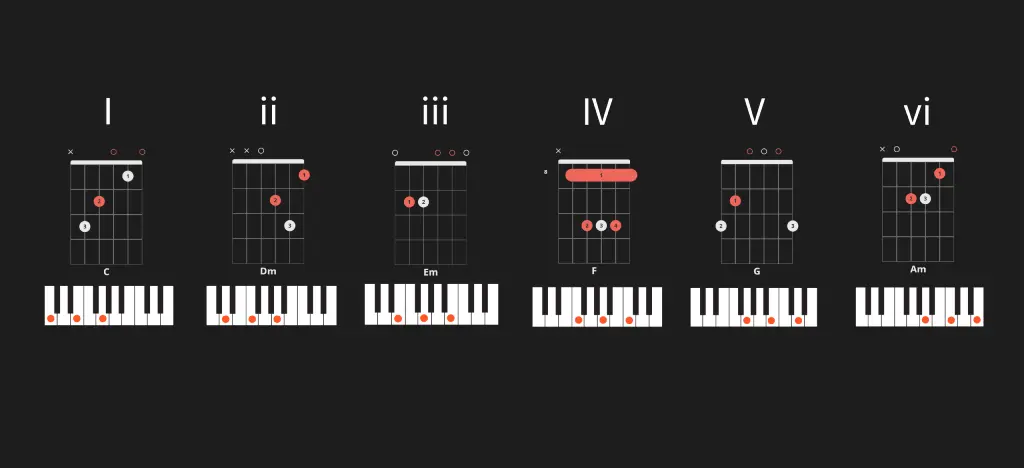Want to understand how chord progressions work — and how to play them on piano or guitar? In this beginner-friendly guide, we’ll break down what chord progressions actually are, why they work, the most common ones to learn first, and how to write your own. You’ll also find real song examples and a visual guide to all the chords in C major for both piano and guitar.
- What is a chord progression?
- What is a key?
- Why musicians use Roman numerals in chord progressions
- The 6 most useful chords in C major
- The most common chord progressions (with examples)
- Why do chord progressions sound so good?
- How to write your own chord progression
- Playing chord progressions on piano vs guitar
- Need help with chord progressions?
- FAQs: Chord progressions
What is a chord progression?
A chord progression is a sequence of chords that gives structure and movement to music. It’s the reason a few basic chords can suddenly sound like a proper song.
Progressions aren’t random — they’re built around patterns your ears already recognise. That’s why something like C–F–G–C just feels right. It starts at “home,” wanders off, and returns. If you’ve ever found yourself playing a few chords and thinking, hey, this actually sounds like music, that’s a chord progression doing its job.
But to understand why these chords sound good together, you need to understand the idea of a key.
What is a key?
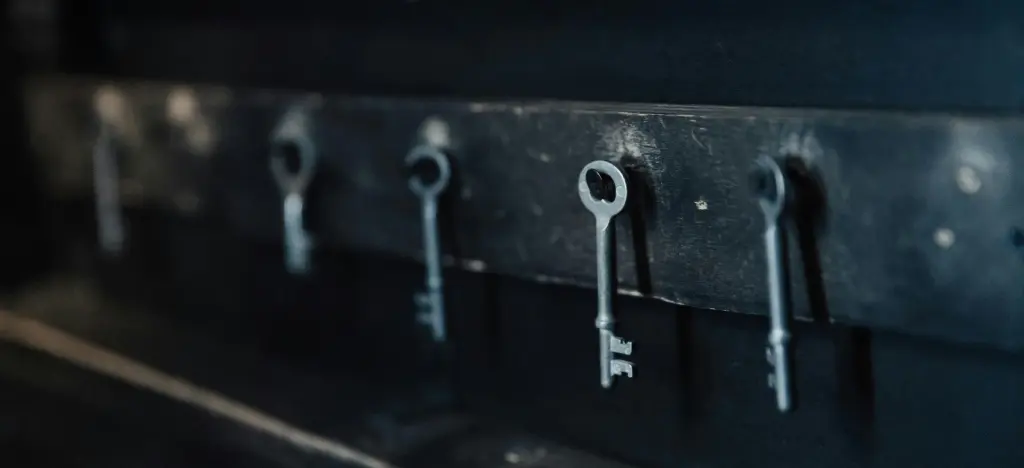 Think of a key as your song’s home base — the musical world your chords and melodies live in.
Think of a key as your song’s home base — the musical world your chords and melodies live in.
When a song is in the key of C major, that means:
It mostly uses the notes: C, D, E, F, G, A, B
And the chords built from those notes: C, Dm, Em, F, G, Am
These chords naturally work together because they’re all part of the same “family.”
A key gives you a set of sounds that feel right together — and a sense of direction. It’s where your music starts, wanders, builds tension, and eventually comes home.
If chords are your ingredients, the key is the recipe that makes them work. Or if you prefer: it’s like a colour palette — and chord progressions are the way you blend those colours to make something meaningful.
💡 ARTMASTER TIP: Still wrapping your head around “keys,” “chords,” and “scales”? Our music terms explained guide breaks down 100+ must-know terms — with real examples and plain English. Great for beginners.
Why musicians use Roman numerals in chord progressions
 You’ll often see chord progressions written like I–IV–V or I–V–vi–IV instead of just “C–F–G” or “C–G–Am–F.” That’s because musicians use Roman numerals to describe how each chord functions within a key.
You’ll often see chord progressions written like I–IV–V or I–V–vi–IV instead of just “C–F–G” or “C–G–Am–F.” That’s because musicians use Roman numerals to describe how each chord functions within a key.
So rather than memorising exact chords for every key, you learn the shape of the progression — and then apply it in any key.
For example:
In C major, I–IV–V = C–F–G
In G major, I–IV–V = G–C–D
In D major, I–IV–V = D–G–A
It’s the same function, just transposed to a different musical “home base.”
Why are some Roman numerals capitalised?
Good question — and it’s not just for decoration.
Capital letters (I, IV, V) = major chords
Lowercase letters (ii, iii, vi) = minor chords
This gives you a quick visual clue about the chord’s mood and strength. Major chords tend to sound bright or strong, while minor chords sound softer or more emotional.
Once you get the hang of it, you can look at something like I–V–vi–IV and instantly know it’s a major–major–minor–major progression — no matter what key you’re in.
💡 ARTMASTER TIP: Want to make sense of keys, chords, and Roman numerals? Start with our practical guide to music theory.
 💡 Want to learn to play songs today?
💡 Want to learn to play songs today?
Meet Artie — the world’s first AI piano teacher that actually listens to your playing and gives real-time feedback to help you improve faster.
Download Artie for free now
The 6 most useful chords in C major
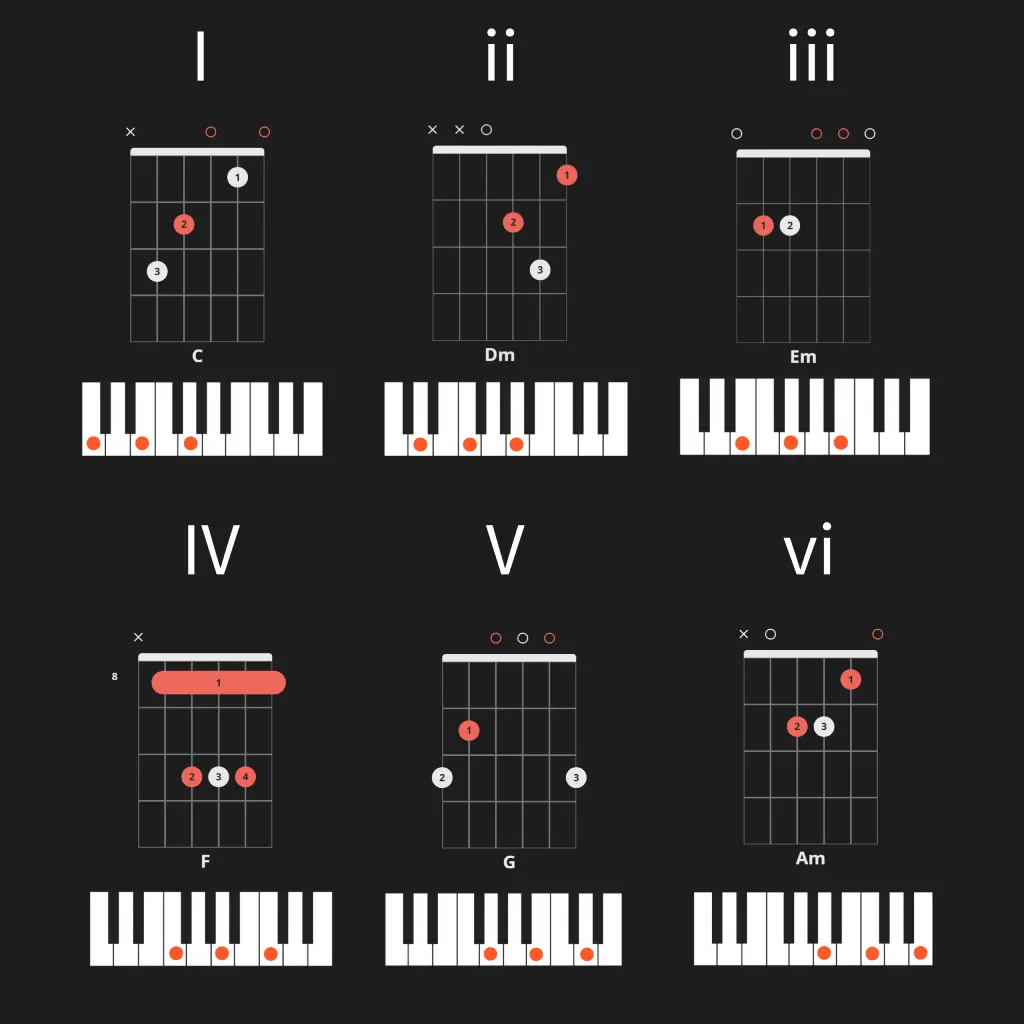 Most beginner songs stick to chords from a single key — and C major is the easiest place to start. No sharps, no flats, and simple shapes on both piano and guitar.
Most beginner songs stick to chords from a single key — and C major is the easiest place to start. No sharps, no flats, and simple shapes on both piano and guitar.
These six chords are your best friends.
Learn them. Practise switching between them. Get comfortable with the shapes.
Because once you can play these, you’ll unlock thousands of real songs — and the building blocks of nearly every chord progression out there.
Number | Chord | Type | Mood |
|---|---|---|---|
I | C | Major | Stable, grounded |
ii | Dm | Minor | Gentle, introspective |
iii | Em | Minor | Lightly moody |
IV | F | Major | Uplifting, open |
V | G | Major | Tense, wants resolution |
vi | Am | Minor | Sad, emotional |
💡 ARTMASTER TIP: Want to understand how today’s music world really works — from algorithms and AI tools to live streaming and building a loyal fanbase? Read: The new essentials: What every musician should learn in 2025
The most common chord progressions (with examples)
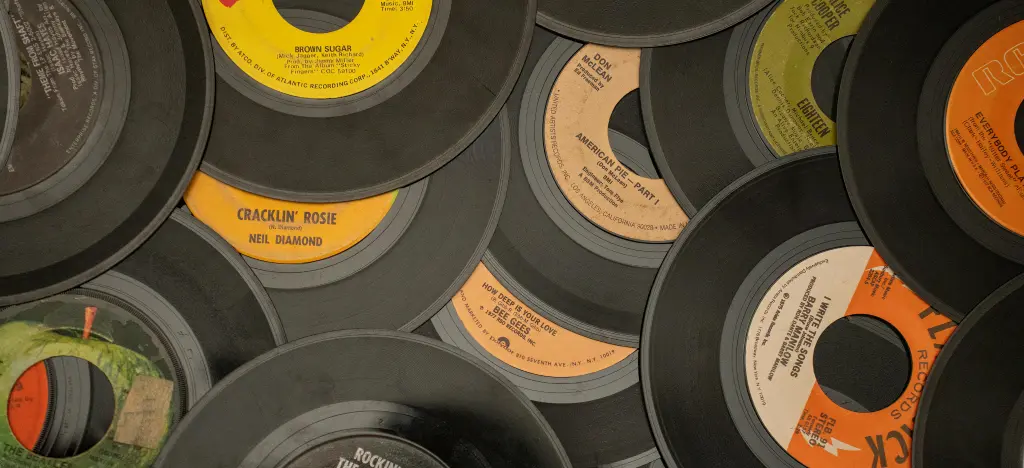 I – IV – V (C–F–G)
I – IV – V (C–F–G)
Simple, strong, and everywhere. It’s the foundation of rock, blues, folk — you name it.
➤ Try it with:
“La Bamba” – Ritchie Valens
“Twist and Shout” – The Beatles
“Wild Thing” – The Troggs
💡 ARTMASTER TIP: Want to play more songs with just three chords? Here’s our guide to 60+ easy 3-chord songs for guitar and piano.
I – V – vi – IV (C–G–Am–F)
The famous “four-chord progression.” Emotional, familiar, and used in everything from love songs to EDM.
➤ Try it with:
“Let It Be” – The Beatles
“Someone You Loved” – Lewis Capaldi
“With or Without You” – U2
vi – IV – I – V (Am–F–C–G)
Moodier and more modern. Great if you want something that sounds a bit deeper.
➤ Try it with:
“Apologize” – OneRepublic/Timbaland
“Love the Way You Lie” – Eminem feat. Rihanna
“Demons” – Imagine Dragons
I – vi – IV – V (C–Am–F–G)
A classic doo-wop-style progression that still holds up today. Smooth and romantic.
➤ Try it with:
“Stand By Me” – Ben E. King
“Every Breath You Take” – The Police
“Earth Angel” – The Penguins
💡 ARTMASTER TIP: Want more songs like these? Check out our list of 100+ easy songs that use just 4 chords.
Why do chord progressions sound so good?
Because they create tension and release — the push and pull that keeps your ears interested.
I (C) feels like home.
IV (F) feels like we’re lifting off.
V (G) feels unresolved — it wants to return.
vi (Am) adds emotion, often used for sad or introspective moments.
Even if you don’t know the theory, your brain picks up on these patterns. That’s why playing a good progression feels satisfying — it makes emotional sense.
💡 ARTMASTER TIP: Why do chord progressions feel so satisfying? Because they create tension and release — the emotional push and pull your ears crave. Read how music theory can improve your songwriting.
How to write your own chord progression
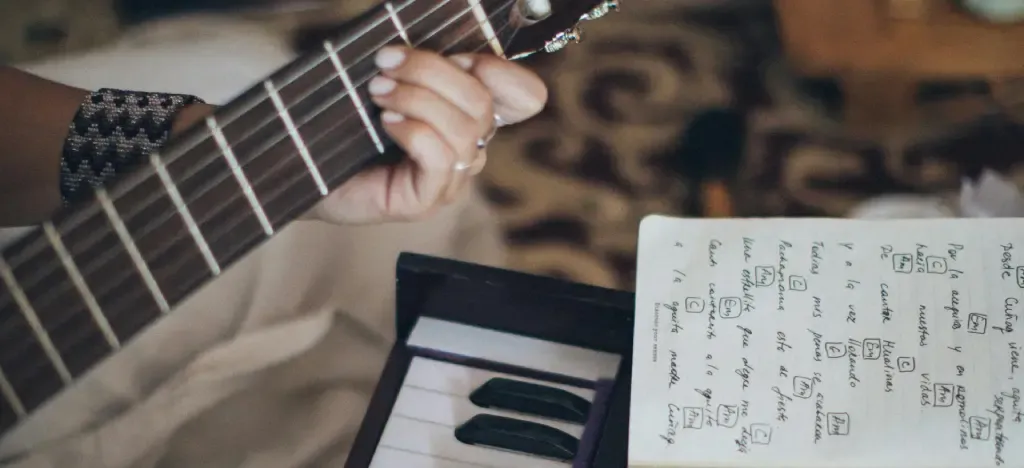 You don’t need advanced theory to write a good progression — just a few chords and your ears.
You don’t need advanced theory to write a good progression — just a few chords and your ears.
Here’s how to get going:
Start with the key of C major (no sharps, no flats — easy on both guitar and piano).
Pick 3 or 4 chords from the set: C, Dm, Em, F, G, Am.
Play around with the order. Loop them. See what feels right.
Trust your ears. If it sounds good, it is good.
Some progressions to try:
C → F → G → C — simple, strong, classic
C → Am → F → G — emotional and familiar
Am → F → C → G — moody and modern
G → Dm → Em → C — unexpected, but it works
You’ll know when it clicks. And once it does, you’ve got the bones of your own song.
💡 ARTMASTER TIP: You don’t need advanced theory to write a good progression — just a few chords and your ears. Once you’ve found a combo that clicks, what next? Read inspirational techniques songwriters use to craft hits
Playing chord progressions on piano vs guitar
Both instruments use the same chords — but they feel different to play.
Piano tips:
Use your left hand for the bass note, right hand for the chord.
Try broken chords or inversions for smoother transitions.
Experiment with dynamics — soft vs strong.
Guitar tips:
Start with open chords and clean strumming.
Use a capo to shift key without changing shapes.
Try arpeggios (picking each string) for variation.
Need help with chord progressions?
If chord progressions still feel a bit mysterious, you’re not alone — but help is at hand.
Want to understand the theory?
Music Theory for Beginners explains progressions, keys, and seventh chords clearly — no academic fluff, just tools you’ll use.Just starting out on piano?
David Bennett’s Piano 1 teaches chords, simple progressions, and how to actually sound musical — even as a total beginner.Playing guitar?
Try Acoustic Guitar for Beginners or Electric Guitar for Beginners to get confident with chord shapes and real songs.Producing music?
Piano for Producers shows how to build powerful progressions, arrange with emotion, and record piano parts that fit into your tracks.Prefer learning by doing?
Meet Artie, our AI piano teacher. He listens, gives instant feedback, and helps you improve as you play — no theory required.
🎯 Try all our courses for free as part of your free 7-day trial
FAQs: Chord progressions
What are the most common chord progressions?
Some of the most popular ones are:
I–IV–V (C–F–G)
I–V–vi–IV (C–G–Am–F)
ii–V–I (Dm–G–C)
I–vi–IV–V — the “50s progression”
Why are these progressions used in so many songs?
They create tension and release — the emotional rise and fall our ears naturally enjoy.
What’s the “50s progression”?
It’s I–vi–IV–V — a doo‑wop-style progression used in countless love songs and pop classics.
What is ii–V–I and where is it used?
That’s a classic jazz turnaround — ii–V–I — heard in jazz, soul, R&B, and more.
Why use Roman numerals for chords?
Roman numerals show each chord’s role in the key — and make it easier to transpose.
Do I really need theory to write progressions?
No — just choose chords from one key, try different combinations, and trust your ears.
Are chord progressions the same on piano and guitar?
Yes — the chords are the same, but the feel and finger shapes are different.
About the author
Matt Ford is a musician, teacher, writer, and lifelong student of sound.
With years of experience in both performing and teaching, he shares practical advice through ArtMaster to help musicians at every level build skill and confidence in their playing.
